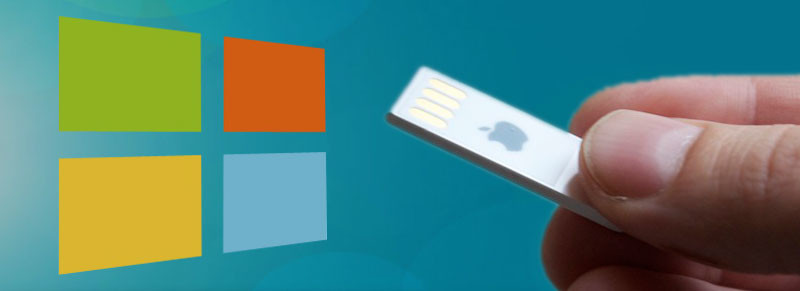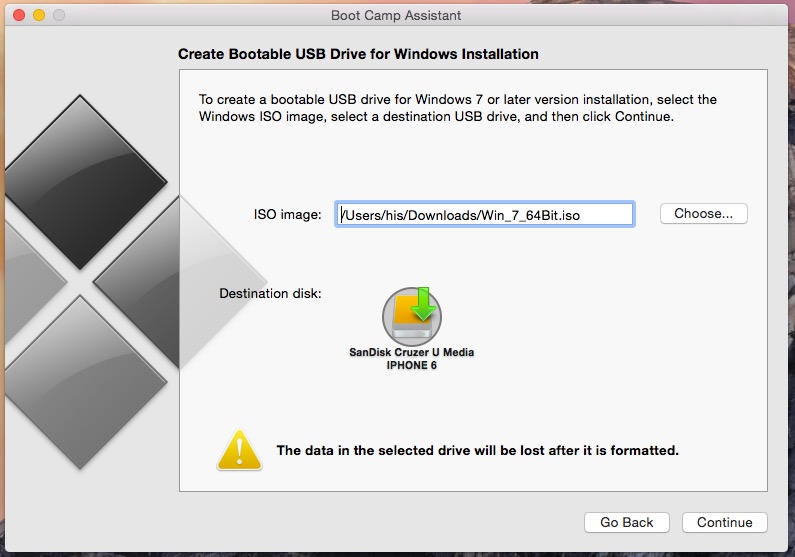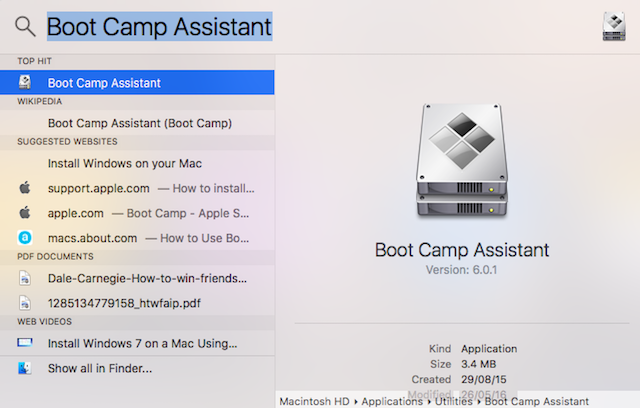
- #How to install windows on mac using usb how to
- #How to install windows on mac using usb mac os
- #How to install windows on mac using usb install
- #How to install windows on mac using usb Pc
- #How to install windows on mac using usb iso
#How to install windows on mac using usb install
Your best bet then is to install Windows 10 onto your Mac itself and use Microsoft’s Media Creation Tool or a third-party utility such as Rufus to create a compatible bootable Windows 10 USB stick.
#How to install windows on mac using usb Pc
If not, it’s likely that your PC uses the much older BIOS (Basic Input/Output System) instead of UEFI (Unified Extensible Firmware Interface). Boot into Your Computer and Start Repairingĭid you manage to boot into your computer with the USB stick? You probably did. The USB stick should also function as a bootable device on your Mac. Do remember to change the boot order if you haven’t done that already already. You can now disconnect the USB drive and use it to boot into your PC. After Terminal finishes copying all files, unmount the USB from the desktop or use the following command (replace with correct disk identifier) instead. Sudo wimlib-imagex optimize install.wim –solidĬp install.wim /Volumes/WINDOWS10/sources/install.wimĩ. However, this method can take a lot of time (up to an hour) to complete.


Copy and paste the following command and press Enter.Īlternatively, you can use the two commands below to compress and copy the install.wim file to the drive. Go to Finder > Applications and launch Terminal.Ģ.
#How to install windows on mac using usb iso
If you plan to use an older Windows 10 ISO file with an “install.wim” file under 4GB, skip ahead to the next section.ġ. Install HomeBrew and wimlib on your Mac by running the following commands in the Mac’s Terminal. You can’t use the USB stick to boot into a PC.You get a There is not enough space available on the disk message.You get An error occurred while formatting the disk message.The Create a Windows 10 or later install disk option is missing.Then, unmount the flash drive (right-click and select Eject) from the desktop.Ĭontinue reading and use the Mac’s Terminal instead if you run into any of the problems below: Wait until the Boot Camp Assistant finishes creating the bootable Windows 10 USB. Select the Windows 10 ISO image from your Mac’s internal storage and select Continue.ĥ.

Then, uncheck the box next to Install Windows 10 or later version and select Continue.Ĥ. Check the box next to Create a Windows 10 or later install disk. Select Continue on the Introduction screen.ģ. Go to Finder > Applications > Utilities and launch Boot Camp Assistant.Ģ. Note: You can’t use Boot Camp Assistant on Mac’s with Apple M1 chipsets.ġ. It comes with an option to create bootable Windows 10 USB drives on a few Mac models, but it usually ends up running into issues while formatting or copying files to the flash drive. Give the Boot Camp Assistant a Try Firstīefore you go ahead, you may want to give the Mac’s Boot Camp Assistant a try first. If you do have a copy lying around, feel free to use it. However, Microsoft does not make older versions of Windows 10 available for download in ISO format. In that case, you don’t have to install HomeBrew and wimlib since you can copy the file to the USB stick normally. Specify your language, time and current format, and keyboard or input method and select Next.If you have an older ISO image of Windows 10 (such as Windows 10 version 1903 or earlier), it may have an “install.wim” file under 4GB. Go through the steps that follow to install Windows 11.ġ. If you have trouble accessing it, you must access the UEFI and change the boot order.Īfter booting from the USB drive, you should see the Windows 11 Setup screen. Once you’ve invoked the Boot Manager, use the Up and Down arrow keys to select the USB drive, and press Enter to boot from it. For example, you can open the Boot Manager on Acer laptops by pressing F9. It’s best to check with the PC manufacturer for the exact key.

That consists in pressing the relevant key at computer startup, such as F2, F9, or F12. Provided that your PC meets Windows 11’s system requirements, the trickiest part next involves accessing your PC’s Boot Manager.
#How to install windows on mac using usb mac os
The file or drive must support Mac OS Extended and have at least 14GB of available storage. So unless you plan on installing it onto a relatively recent desktop or laptop model, you must ensure that the PC is Windows 11-compatible by using Microsoft’s PC Health Check app. To install macOS on these computers, you'll need a flash drive that supports USB-C or a USB hub or adapter. Windows 11 imposes stringent system requirements such as support for TPM (Trusted Platform Module) 2.0.
#How to install windows on mac using usb how to
How To Install Windows 11 Using a Bootable USB Drive However, you need to rely on a workaround since the Media Creation Tool does run on macOS. Note: You can also create a bootable Windows 11 USB on Mac.


 0 kommentar(er)
0 kommentar(er)
